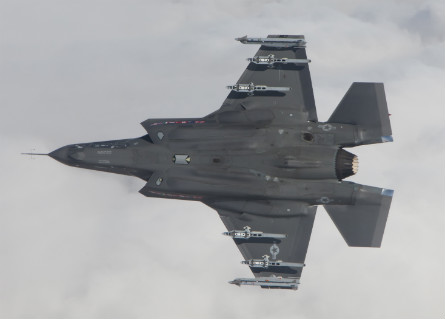If there is a further dramatic cost increase on the Lockheed Martin F-35 Joint Strike Fighter (JSF), Norway will reconsider its participation in the programme.
"If there should happen to be something that would really affect the cost curves in the next months, in the next years, all nations including Norway will, of course, reconsider the whole project," says Norway's state secretary for Defence, Roger Ingebrigtsen. "I have no reasons to believe that. I was more nervous two years ago than I am today."
Should something go horribly wrong, however, Norway would be forced to reconsider the programme, he says. But Norway needs the F-35.
 |
|---|
©Lockheed Martin |
"The best we can get is the F-35," Ingebrigtsen says. There is a reason that a nation like Japan, which has signed onto the programme comparatively late, has selected the stealthy fifth-generation jet for its arsenal, he says. But US support for the F-35 is critical.
"I hope the politicians in the United States stay strong on the F-35 programme," he says.
The country will buy 52 of the jets. But even with its increasing oil wealth, the Nordic nation cannot afford to pay for all of those aircraft at the same time. So the country will have to stagger its procurements.
"It's really a huge sum of money," Ingebrigtsen says. "Therefore we have to spread it out."
For Norway, the F-35 is its largest ever defence procurement. The runner-up is Lockheed's own F-16, which Norway bought in 1977, Ingebrigtsen says.
Getting the F-35 on the timeline it has set is important for the country because its F-16s will reach the end of their lives around 2020-2022. The country will start off its procurement with two jets in 2015, with two more in 2016, which will be used for training. A further six would be purchased in 2017, moved up from 2018. Later jets would be bought in 2022 through 2023, but buys could stretch through 2024 if necessary.
But Norway wants the US to jointly integrate the Kongsberg Joint Strike Missile onto the F-35, and it wants the US to sign onto the programme, Ingebrigtsen says. The weapons could be useful to the US against ships and land targets. After a series of meetings with US officials, Ingebrigtsen says, "We feel [confident] that the United States supports this missile."
Another issue that affects the Norwegian F-35 buy is the installation of a braking parachute to operate on icy runways in the far north. The country needs that parachute for its fleet and if the problem cannot be resolved by 2015, that could delay a Norwegian buy.
"Lockheed Martin needs to solve this," he says. "We need parachutes on the first fighter we procure."
Meanwhile, Norway is in discussions to replace a Lockheed C-130J Hercules that crashed earlier in the year. But the cause of that crash has not yet been discovered, the investigation cannot be completed until the summer when the weather is warmer.
Source: Flight International























